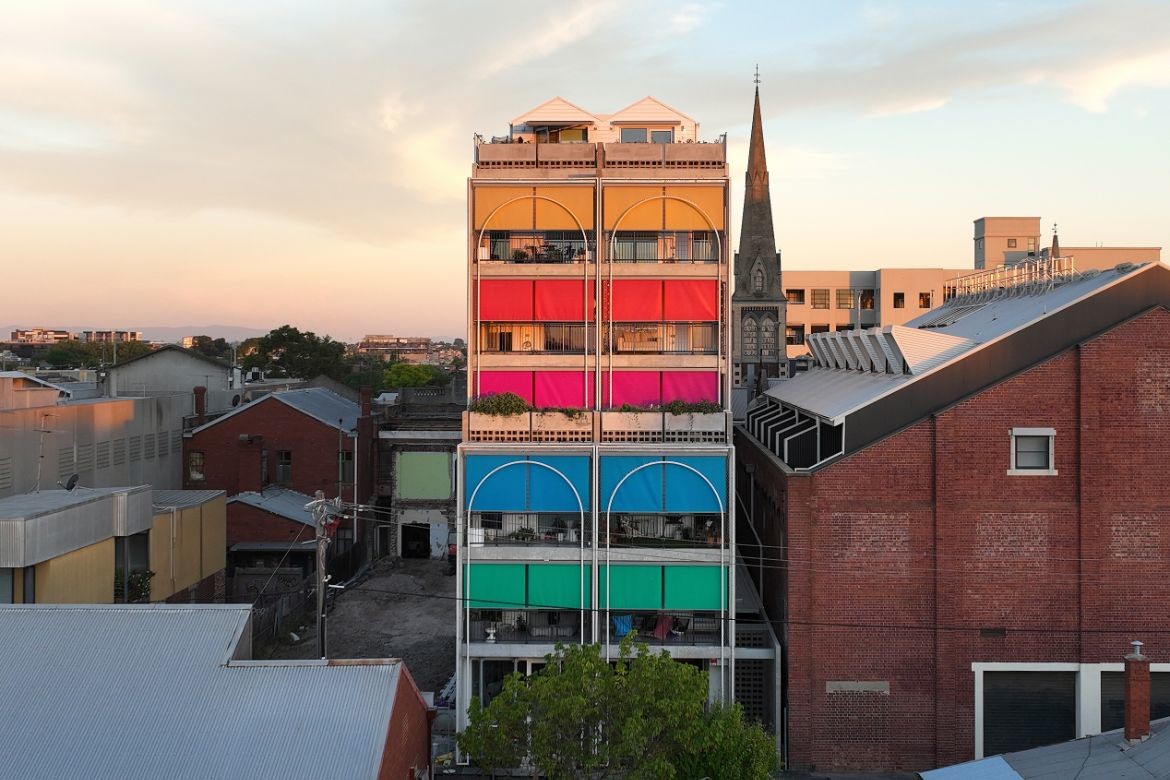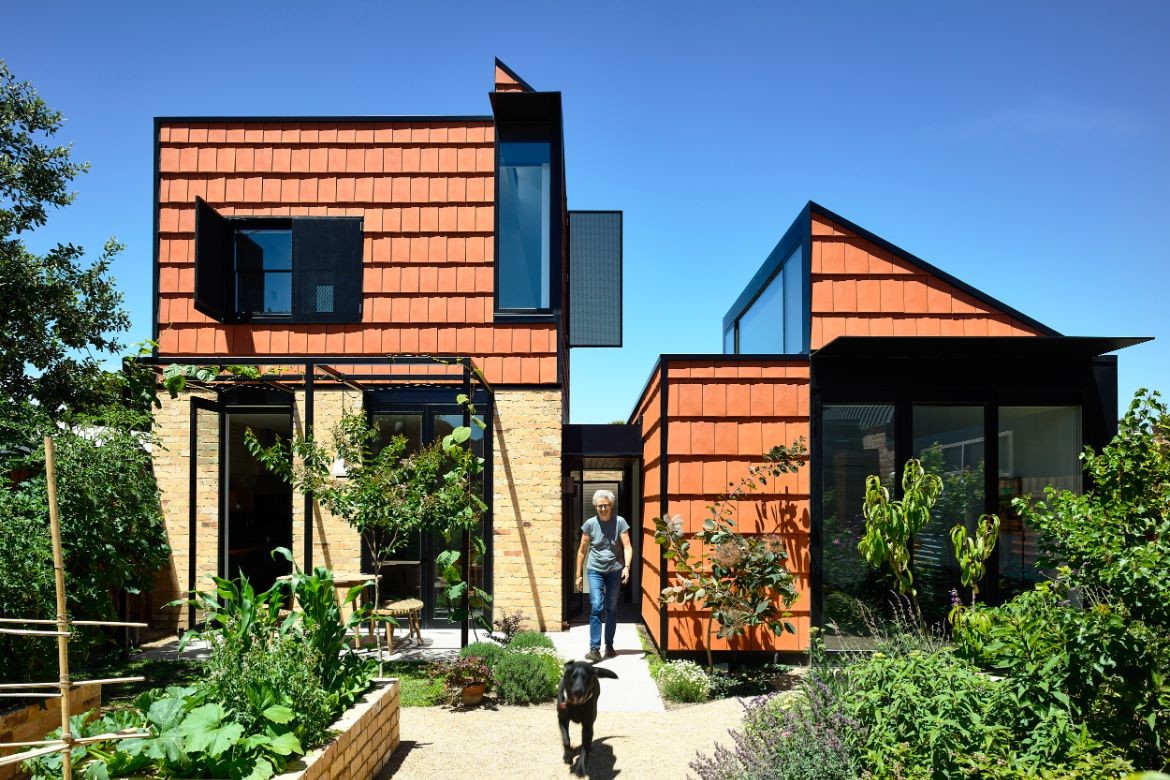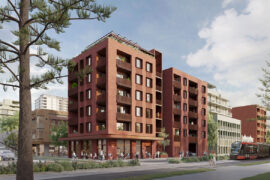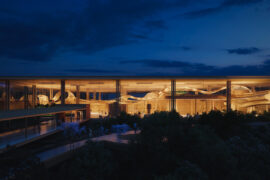Andrew Maynard and Mark Austin refuse the binary choice between a fun working environment and serious design. Timothy Alouani-Roby spoke with them about the ideas and values guiding their practice.

Left-right, Mark Austin and Andrew Maynard.
January 2nd, 2023
It all starts with a set of strong values. Not only each project, but the very practice itself as set up by Andrew Maynard in 2002. Led by Maynard and co-director Mark Austin, the studio is a refreshing exception to the often depoliticised, isolated world of architecture in recent decades.
The architects are not afraid to make critical, polemical statements and do not try to be neutral. In a word, Austin Maynard Architects is unapologetic in standing for something: caring about the social dimension of architecture including community connection, sustainability and mental health.
This attitude marks the beginning of any given project: “The reality is that the clients who have come to us have done so not just because we create good architecture but because of our worldview and how our values align,” says Maynard.

Award-winning projects such as RaeRae House and of course the renowned Terrace House illustrate this client-facing and socially engaged approach.
In bringing an upfront and explicit set of values to each project and client encounter, Austin Maynard Architects is practising architecture with a certain honesty. Its success, including recently being awarded Architecture Studio of the Year at the Dezeen awards, is testament to the demand for this way of working.

Once the project is locked in, the next part is deliberative design. Even though Austin and Maynard bring strong values and ideas to the table, they are careful to avoid imposing preconceived concepts on the design. Instead, it emerges in a consultative process that is deliberately kept open.
“We won’t start drawing until we feel like we understand the clients, but also not until we believe that they understand the opportunities and the brief,” explains Maynard. And once the sketches have begun, Austin adds, “we don’t get too attached to any of the ideas.”
Related: Self-reflecting with Tzannes

Openness, social engagement, ethical employment – you might start to wonder whether there is a touch of idealism going on and how this value-driven approach could really apply across the profession. However, this is where it’s crucial to emphasise the hard-headed, pragmatic side of Austin Maynard Architects.
“Good design – our best designs – come from very serious constraints,” explains Maynard. A clear example of this is embracing budget constraints as a creative catalyst, a mindset reminiscent of Alejandro Aravena’s Elemental. In fact, it surely isn’t too much of a stretch to compare Terrace House to the famous Quinta Monroy Housing in Chile with its emphasis on down-to-earth, liveable dwellings with space for inhabitants to grow into.

Principles also merge with business nous as the architects prioritise taking up a decision-making position in getting a project out of the ground. In fact, as Maynard explains, they go even further: “We just ended up doing it ourselves. After that, we can sit at the table with developers and housing providers with much more power.”
Underpinning everything is a holistic understanding of architecture not as an idealised, autonomous pursuit but as a thread in the wider social fabric. Rigid boundaries between design, business and politics are dissolved in a way of working that starts with a clear statement of principles. By combining these values with a fun, joyful and playful working environment, Austin Maynard Architects seem to have found a meaningful and successful mode of design for the times.
Austin Maynard Architects
maynardarchitects.com




We think you might like this article about latest careers moves in design in our On The Move column.
INDESIGN is on instagram
Follow @indesignlive
A searchable and comprehensive guide for specifying leading products and their suppliers
Keep up to date with the latest and greatest from our industry BFF's!

The undeniable thread connecting Herman Miller and Knoll’s design legacies across the decades now finds its profound physical embodiment at MillerKnoll’s new Design Yard Archives.

For Aidan Mawhinney, the secret ingredient to Living Edge’s success “comes down to people, product and place.” As the brand celebrates a significant 25-year milestone, it’s that commitment to authentic, sustainable design – and the people behind it all – that continues to anchor its legacy.

London-based design duo Raw Edges have joined forces with Established & Sons and Tongue & Groove to introduce Wall to Wall – a hand-stained, “living collection” that transforms parquet flooring into a canvas of colour, pattern, and possibility.

The World Architecture Festival has named The Holy Redeemer Church and Community Centre of Las Chumberas in La Laguna, Spain as World Building of the Year 2025, alongside major winners in interiors, future projects and landscape.

The Minns Labor Government has unveiled nine new architect-designed mid-rise apartment patterns, expanding the NSW Housing Pattern Book and accelerating the delivery of accessible, high-quality housing across the state.
The internet never sleeps! Here's the stuff you might have missed

The Australian Institute of Architects has unveiled 43 projects representing the pinnacle of contemporary design, with winners addressing housing, climate and affordability crises through innovative solutions.

Recognised as winners at the INDE.Awards 2025, Enter Projects Asia in collaboration with SOM have received The Influencer award. Their work on Terminal 2 Kempegowda International Airport Interiors redefines the aesthetics of airport design through a monumental expression of biophilia, sustainability and craftsmanship.